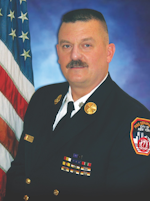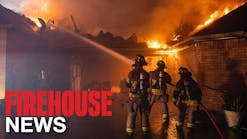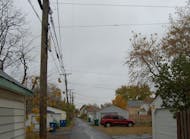During my 33-year career with FDNY, I worked in all five boroughs and in engine, truck, squad and rescue companies. Lastly, I worked as a battalion chief. I noticed many times that just about all firefighters as they climb off of their apparatus at a fire scene look up. This isn’t a random or casual act. It actually is a very good tactical habit to fill in the blanks on arrival at a structural fire. Every firefighter should consider starting the practice.
Hose and ladder length
The first thing that you will see is the height of the involved building. This is important, because you might need to estimate the number of lengths of hose that are needed to reach the fire or the length of the ladder that’s required to reach the roof or a particular window. If you use preconnected attack hoselines, you better know that the one that you select to stretch is long enough to reach and extinguish the fire. If you must throw a ladder for roof access or any other assignment, you must know the distance that the ladder must reach.
Power lines
Another important discovery might be the presence of power lines from a utility pole to the involved building. Without getting too technical, you don’t want to contact wires that are in the way of any portable ladder or aerial ladder. Of course, that could be dangerous or deadly. Additionally, if the fire burned the wires, a live wire could be on the ground, where you or another member can step on it and be injured.
Target area
If the fire involves the front of the building or is venting out of the front, the visible fire and/or smoke gives you a good general area to look for the fire to be when you get into the building. Many times, when firefighters arrive at a building that’s on fire, there isn’t an indication on the front of the building. When you can see the smoke or fire, it can be very helpful for search teams and engine crews to enter the building with a target floor or area in mind. It might not be exact. You might have to search further, or the fire even can be on the floor below where it’s showing out of the front, but it still is a good clue.
Peaked roof, penthouse, etc.
If the involved building has a peaked roof, a visible penthouse or a structure that’s above the top floor, that feature might be visible when you look up. Knowing that, for example, a six-story apartment house also has a penthouse on the roof can indicate a duplex apartment. This information also can affect the floor numbering system and cause confusion among the interior teams that are searching the floor that’s above the fire.
Fire escapes
Looking up also can reveal fire escapes on the front of the involved building. In New York City, most fire escapes that are installed on the front of a building don’t reach the roof, but almost all rear-located fire escapes include a gooseneck ladder to the roof from the top-floor balcony. Seeing a front-installed fire escape lets you know that there’s a secondary means of egress for the occupant and another option for firefighters to use to enter the building.
Victims
Finally, you might look up as you arrive at a fire in an apartment house and see victims. This visual sighting of a person who is in distress might be the first confirmed information that you have concerning a trapped occupant who must be rescued. Seeing a single person at a window and smoke coming out over the individual’s head also could indicate that there are more people in that apartment or room who need assistance.
A glance skyward
So, the next time that you jump down off of your apparatus at a structural fire, stop for just a second and look up. You could miss a lot if you don’t.

John J. Salka Jr. | Battalion Chief
JOHN J. SALKA JR., who is a Firehouse contributing editor, retired as a battalion chief with FDNY, serving as commander of the 18th battalion in the Bronx. Salka has instructed at several FDNY training programs, including the department’s Probationary Firefighters School, Captains Management Program and Battalion Chiefs Command Course. He conducts training programs at national and local conferences and has been recognized for his firefighter survival course, “Get Out Alive.” Salka co-authored the FDNY Engine Company Operations manual and wrote the book "First In, Last Out–Leadership Lessons From the New York Fire Department." He also operates Fire Command Training, which is a New York-based fire service training and consulting firm.






